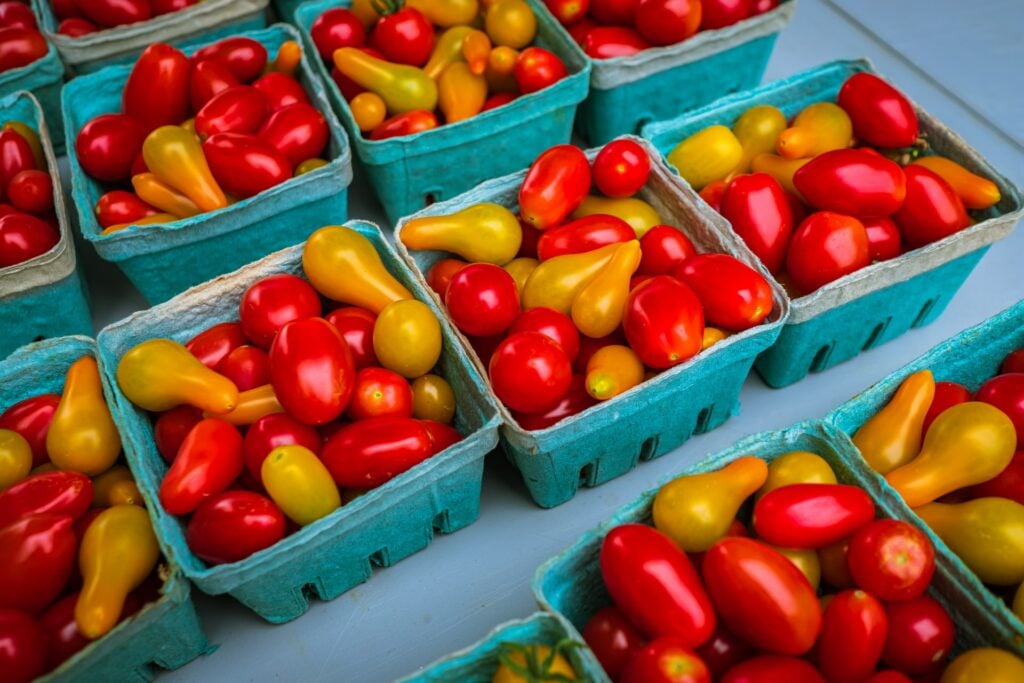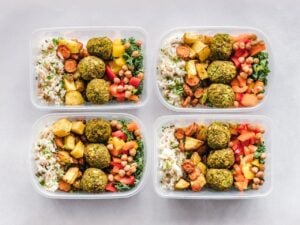Summer Fruit And Vegetables: Eating With The Seasons

Summer is a great time to get outside and enjoy the warm weather. It’s also a great time to eat summer fruit and vegetables that are in season.
By eating with the seasons, you can enjoy food at its peak of flavor and nutrition. We recommend reading a seasonal produce guide to know what’s in season. These will help you plan your meals and grocery shopping accordingly.
Why is it important to know what’s available and fresh each season? Seasonal eating supports your body’s nutritional needs. It also reduces the carbon footprint, making it eco-friendly.
Check out this summer fruit and vegetable guide. Start enjoying the best of summer’s bounty!
Why Should You Stock Up on Summer Fruits and Veggies?
Wondering how summer fruit and vegetables benefit you? They’re not only delicious but they’re also packed with nutrients that your body needs. Vitamins, minerals, and antioxidants are critical for maintaining good health. You can find them in abundance in summer produce.
In addition, seasonal fruits and vegetables are typically more affordable than out-of-season options. So, stocking up on summer produce is a great way to save money and eat healthy at the same time.
Tips for getting the most out of summer vegetables and fruits:
- Eat what’s in season for the best flavor and nutrition
- Search for recipes that use seasonal ingredients
- Get to know your local farmers and learn about their growing practices
- Visit a farmer’s market or join a CSA (Community Supported Agriculture) program
- Preserve fruits and vegetables from the summer bounty (so you can eat them during winter)
Now, let’s dive into our list of summer fruit and vegetables that should be in your fridge this season!
Summer Vegetables to Eat
There are plenty of delicious summer vegetables to enjoy during the warmer months. Here are a few of our favorite vegetables to eat in summer:
Tomatoes
Best time to eat: June – August
Curious about when are tomatoes in season? Always a summer staple, tomatoes are great for snacking, salads, and cooking. Look for heirloom varieties for the best flavor.
Tomatoes are rich in vitamin C, which supports the immune system. They also provide lycopene. This is an antioxidant linked to reduced risk of heart disease and cancer. Tomatoes offer potassium, important for blood pressure control.
Corn
Best time to eat: May – September
Secondly, sweet and nutritious, corn is a summer BBQ must-have. Serve it grilled, roasted, or in a salad.
Corn is also a good source of fiber, which aids in digestion. It contains essential B vitamins that are crucial for energy production. Corn provides antioxidants such as zeaxanthin and lutein, which support eye health.
Peppers
Best time to eat: July – November
Another versatile vegetable, peppers, can be enjoyed raw, cooked, or pickled. Try them in various dishes for a pop of color and flavor.
Peppers are high in vitamin A, which is essential for vision and skin health. They also contain vitamin E, which helps protect cells from oxidative stress. Peppers have a good amount of folate, which is important for cell growth and metabolism.
Cucumbers
Best time to eat: May – August
Cool and refreshing, cucumbers make a great addition to salads and sandwiches. Choose English cucumbers for fewer seeds.
Cucumbers are a good source of hydration due to their high water content. They also offer essential vitamins such as K, which is vital for blood clotting and bone health. The silica in cucumbers can help improve joint health by strengthening connective tissue.
Carrots
Best time to eat: Year-round, but best during the cool seasons of spring and fall
Summer is not the best time to eat carrots. But this vegetable is still available in early summer due to its long growing season.
Carrots can be roasted, grilled, or enjoyed raw as a perfect summer side dish. Look for multi-colored varieties for a fun and festive twist.
Carrots are a great source of beta-carotene. The body converts this into vitamin A to support good vision and a healthy immune system. Carrots contain dietary fiber, which aids in maintaining a healthy digestive system.
Celery
Best time to eat: Year-round, but best from October – December
Celery is a great summer vegetable for snacking and adding to salads. In addition, it’s also low in calories and high in fiber.
Celery is loaded with phytonutrients that can help reduce inflammation in the body. It provides a decent amount of vitamin C, promoting skin health and immune function.
Celery contains potassium. This is essential for cardiovascular health and maintaining proper fluid balance.
Eggplant
Best time to eat: July – October
Eggplant is another versatile summer vegetable. It’s often grilled, roasted for barbeques, or used in other cooked dishes. Look for firm, shiny eggplants with no bruising.
Eggplants are a source of manganese, which plays a key role in bone health and metabolism. They also contain fiber, contributing to healthy digestion and weight management.
Additionally, eggplants have compounds such as nasunin. This is an antioxidant that protects brain cell membranes.
Green Beans
Best time to eat: May – October
Green beans are classic summer vegetables that can be steamed, grilled, or roasted. Choose fresh beans that are bright green in color and snap easily when bent.
Green beans are a low-calorie food that supports weight management. They are rich in chlorophyll, which may help protect against cancer. Green beans also provide a good source of iron. This is crucial for maintaining healthy red blood cells.
Take a look at our produce storage guide for ways to keep your produce the freshest.
Fruits In Season During Summer
When the summer heat is blazing, there’s nothing like biting into juicy, ripe summer season fruits. Here are some of our favorite fruits in season during the summer:
Watermelon
Best time to eat: June – August
Let’s begin with a summer classic, watermelon. Watermelon is the perfect treat on a hot day. Eat it plain, in a salad, or blended into a refreshing drink.
Watermelon is a hydrating fruit. It’s an excellent choice for maintaining moisture balance in the body. Hot summer days will feel cooler with a watermelon on hand!
Watermelon contains citrulline. This is an amino acid that may help improve blood flow and reduce muscle soreness.
Watermelon’s vitamins A and C support skin health and the immune system, respectively.
Berries
Best time to eat: Each berry has its own prime season. Here are the most common ones:
- Blackberries: May – September
- Blueberries: April – September
- Raspberries: July – October
- Strawberries: April – June
Looking for versatile summer fruit and vegetables? You can’t go wrong with berries!
Berries are perfect for snacking, adding to yogurt or cereal, or baking into pies and cobblers. Look for locally grown berries for the best flavor. They’re rich in Vitamin C!
Berries are loaded with antioxidants that help fight oxidative stress. They may also protect against cancer. They are also a good source of dietary fiber. This can help regulate blood sugar levels and improve digestive health.
Cantaloupe
Best time to eat: June – August
Another delicious melon, cantaloupe, is perfect for breakfast or as a light dessert. Serve it chilled with a sprinkle of mint for extra refreshment.
Cantaloupe is an excellent source of vitamins A and C. These are vital for eye health and immune system support.
This juicy fruit is also rich in potassium. It helps regulate blood pressure and hydration levels. Cantaloupe contains folate, beneficial for heart health. It’s also essential for pregnant women to support fetal development.
Honey Dew Melon
Best time to eat: June – October
Like cantaloupes, honeydew melon is an excellent breakfast or dessert treat. Most enjoy the sweetness of this melon over watermelons and cantaloupes.
Honeydew melon is low in calories, making it an ideal choice for weight management. It offers a good supply of vitamin B6, essential for brain health and metabolism.
Pears
Best time to eat: August – October
“Is pear a summer fruit?” Yes, pear is a summer fruit. It’s yet another fruit that can be enjoyed fresh or baked into pies and cobblers.
Pears are rich in dietary fiber, which helps promote regularity and prevent constipation. They carry high levels of vitamin K, essential for blood clotting and bone health. Pears have a low glycemic index. They’re a suitable fruit for people managing their blood sugar levels.
Peaches
Best time to eat: May – September
A summertime favorite, peaches are perfect for:
- Eating out of hand
- Using in pies or cobblers
- Grilled with a little bit of sugar and cinnamon
Peaches are a good source of antioxidants that help protect the skin from aging and disease. They contribute to eye health due to their content of beta-carotene. The body converts this into vitamin A.
Peaches support heart health by providing potassium. This mineral helps regulate heart rate and blood pressure.
Nectarines
Best time to eat: May – August
A cousin to the peach, nectarines are delicious fresh, or baked into pies and cobblers.
Nectarines are a hydrating fruit, filled with water. They’re a great choice for staying refreshed during the summer. They are rich in vitamin B3, which aids in metabolism and skin health.
Nectarines also offer magnesium, an essential mineral for muscle function and relaxation.
Plums
Best time to eat: May – October
Since they are both sweet and tart, plums are delicious when enjoyed alone or in a fresh plum pie or cobbler.
Plums help in the absorption of iron, essential for creating red blood cells. They improve cognitive function due to their vitamin B6 content. Additionally, plums assist in maintaining a healthy digestive system. They have natural sorbitol and fiber levels.
Learn more about the different types of stone fruit, many of which are popular during the summer.
Apples
Best time to eat: Available year-round, but best between October and December
What screams a summer picnic more than a hot apple pie? Apples are also great for snacking and adding to salads. For a sweet treat, try honey crisp apples. They have a slight sweetness similar to honey.
Apples are a source of polyphenols, which have antioxidant effects. These antioxidants help to reduce inflammation and lower the risk of chronic diseases. Apples offer dietary fiber, which supports a healthy gut microbiome.
Grapes
Best time to eat: Available year-round, but best between September and October
For those asking, “Are grapes a summer fruit?” The answer is yes! With juicy summer grapes, there are endless options. Often grapes are enjoyed in prepared dishes like chicken salad, or they can be eaten right off the vine.
Grapes are packed with vitamin C, crucial for skin health and immune function. They contain potassium, promoting heart health and blood pressure regulation. The fruit also offers a variety of B vitamins. They support energy production and brain health.
Mangoes
Best time to eat: May – September
Mangoes are the perfect summer fruits to make you feel like you are on the islands! They’re a tropical fruit and smoothie staple.
Look for ripe mangoes when they yield to gentle pressure and have a sweet fragrance.
Mangoes are high in dietary fiber, promoting gut health and regularity. They offer a rich source of vitamin E, contributing to healthy skin and hair. Mangoes have antioxidants like quercetin and mangiferin that support overall health.
Bananas
Best time to eat: Available year-round
Some summer season fruits are actually available all year long! Bananas are perfect for:
- Snacking
- Adding to smoothies
- Giving any dish a tropical feel
Bananas provide an excellent source of magnesium. They also contain tryptophan, an amino acid that can help improve mood and sleep quality. Bananas are an energy-boosting fruit. They’re an ideal snack before or after exercise.
Avocados
Best time to eat: Available year-round, but best between January and March
Some may be surprised to learn this one is on our list of summer fruits! Avocados are actually a fruit, not a vegetable.
They’re perfect for making guacamole or adding to salads and sandwiches. Consider avocados are ripe when they have a dark green color.
Avocados are a powerhouse of heart-healthy monounsaturated fats. These can help reduce bad cholesterol levels. They’re also loaded with fiber. They keep you full longer and support weight management.
Did you know that avocados contain more potassium than bananas? This is crucial for maintaining proper heart function and muscle contractions.
Lemons and Limes
Best time to eat: Available year-round, but best between November and April
Add a little zing to your summer dishes with lemons and limes. They’re perfect for adding to drinks, salads, and main dishes for flavor or garnish. Look for lemons and limes that are brightly colored and firm for the most flavor.
Lemons and limes are high in Vitamin C which boosts the immune system. Their acid content aids in digestion by breaking down food more efficiently. Consuming these types of citrus fruits can help absorb iron from plant-based foods.
Stock Up On Summer Fruits and Veggies
Now, you know which summer fruit and vegetables are in season during the warm months!
As you can see, summer is the perfect time to stock up on fresh fruits and vegetables. Visit your local farmers market or grocery store. Fill your kitchen with the best that summer has to offer. Then, get cooking and enjoy all the deliciousness of summer!
Don’t have time to browse through grocery store shelves or walk in the summer heat at the farmer’s market?
Why not try a meal kit like Gobble?
Do your research to compare services for meal delivery vs grocery shopping. Decide what’s best for you!Wondering what a meal kit is? It’s simple! With Gobble, you have access to a wide variety of freshly prepped meal kits.
If you want to learn more about seasonal fruits and vegetables offered by Gobble, check out our blogs:



